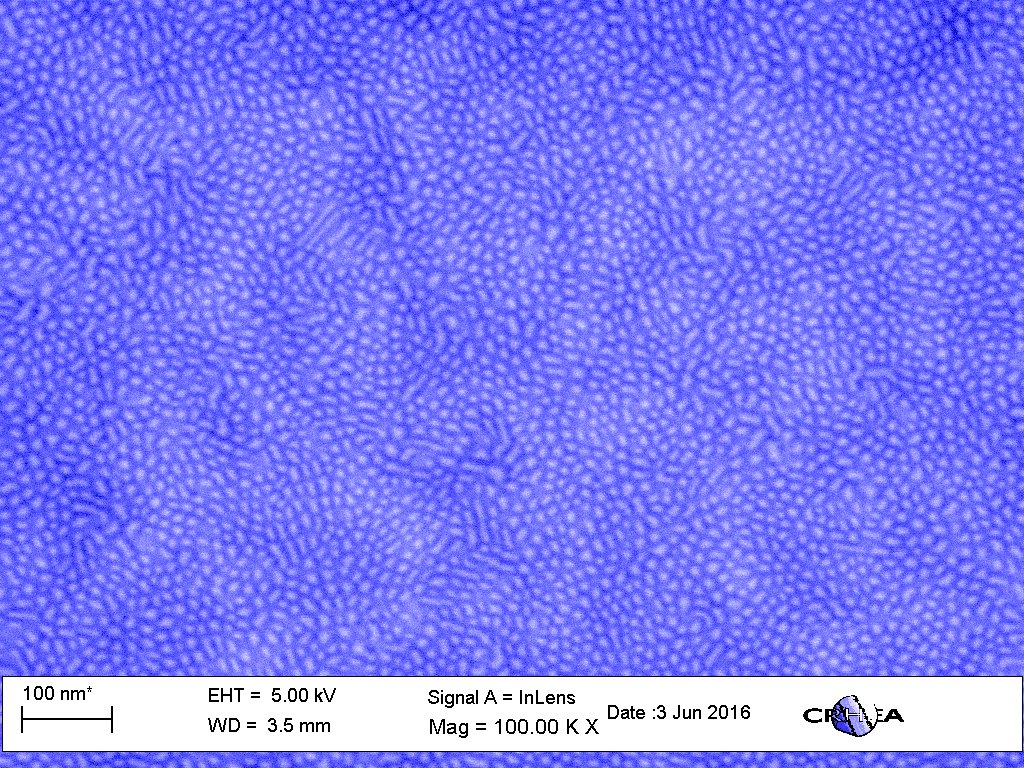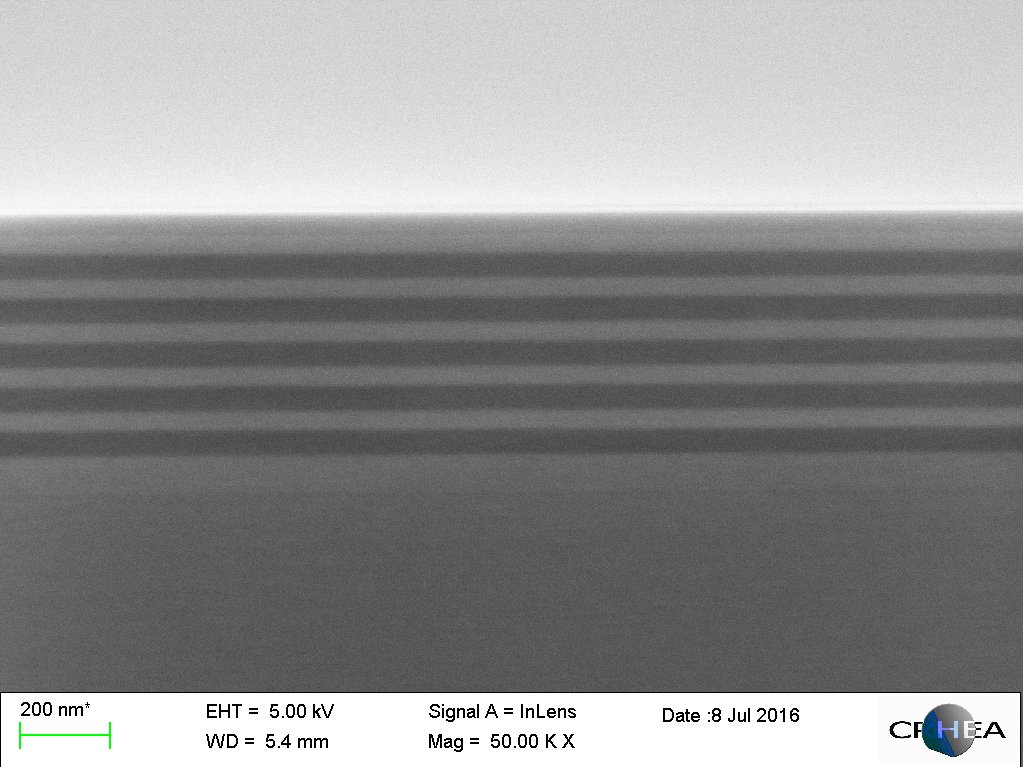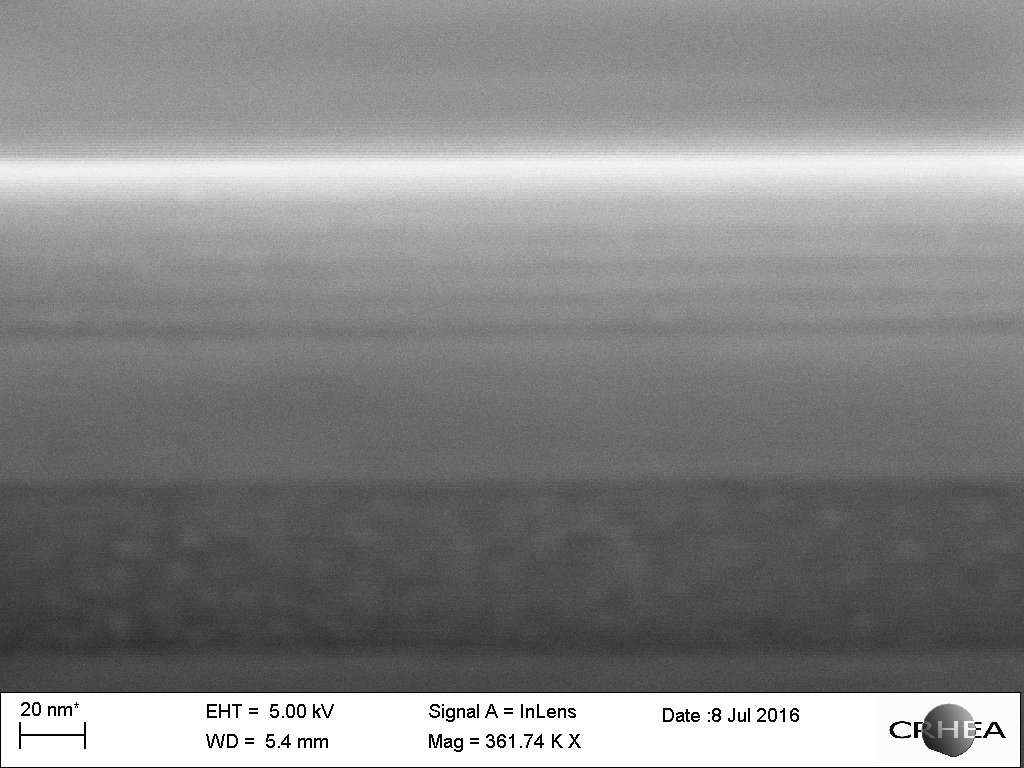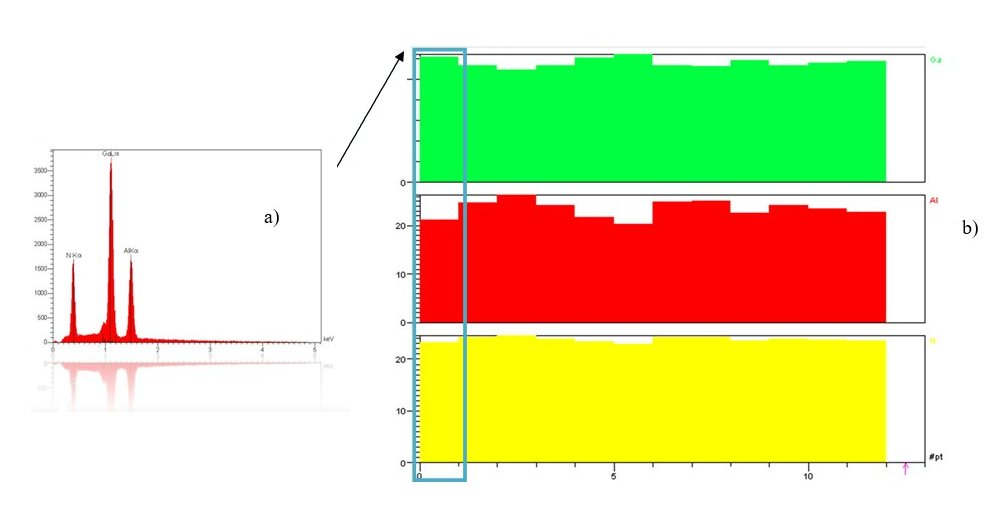Scanning Electron Microscopy (SEM) uses the interactions between
an electron beam and the atoms on the surface of the sample. These
interactions generate secondary electrons, backscattered electrons,
as well as X photons. The image area can vary from cm² to a few hundred
nm², with a resolution up to nm. Imaging can be performed at different
tilt angles of the sample.
This technique allows us to obtain information on the relief, the
morphology and the roughness of the quantum boxes1 and
the thin films2 epitaxized in the laboratory. The chemical
composition3 of the materials can also be evaluated.
1) Topographic image of GaN quantum dots
These GaN nanostructures on a layer of Al0.75Ga0.25N (0001) are formed according to a growth mode called "Stranski-Krastanov". They make it possible to confine carriers (electrons and holes) according to the 3 directions of space, this 3D confinement conferring them the name of "quantum boxes". At CRHEA, quantum dots are used in particular for the production of ultraviolet (UV) emitters, in particular for the production of UV LEDs.

2) Image in quantum well section of ZnO
Zinc oxide (ZnO), a wide bandgap semiconductor material, is one of the most suitable for the manufacture of polariton lasers operating at ambient temperature because of its excellent excitonic properties. Magnesium (Mg) makes it possible to obtain an alloy of larger gap. Thus, with a ZnMgO barrier and a ZnO well, the radiative recombinations are increased by confining the carriers and the efficiency is improved.
At CRHEA we are developing photonic microcavities based on Bragg ZnO / ZnMgO mirrors (left image) and containing a series of ZnO / ZnMgO quantum wells as the active zone (right image).
SEM imaging is used here to measure the thickness of the different layers whose control is crucial for the realization of lasers.


3) EDX microanalysis of an AlGaN layer
The materials (Al, Ga) N are of great interest for optoelectronic
devices, in particular for diodes emitting ultraviolet light (UV LED).
This alloy is a good candidate for UV emission because it is possible
to give the band gap of 3.4 eV (GaN) at 6.0 eV (AlN) by adjusting
the composition of Al.
Below: the determination by EDX microanalysis of the Al and Ga composition
of a layer of AlGaN on sapphire, obtained by molecular beam epitaxy.
A comparison of the concentration in% at different points of the sample
makes it possible to evaluate the uniformity of the layer.

b) Measured compositions (%) in Ga (green), Al (red) and N (yellow), at different points in the sample, at a voltage of 5keV (1.4 nA beam current) at a magnification x1000 (30sec acquisition time) 10ev x 512channels (Molecular Epitaxy ©J. Brault)
The devices used are described in the page characterization of CRHEA.


